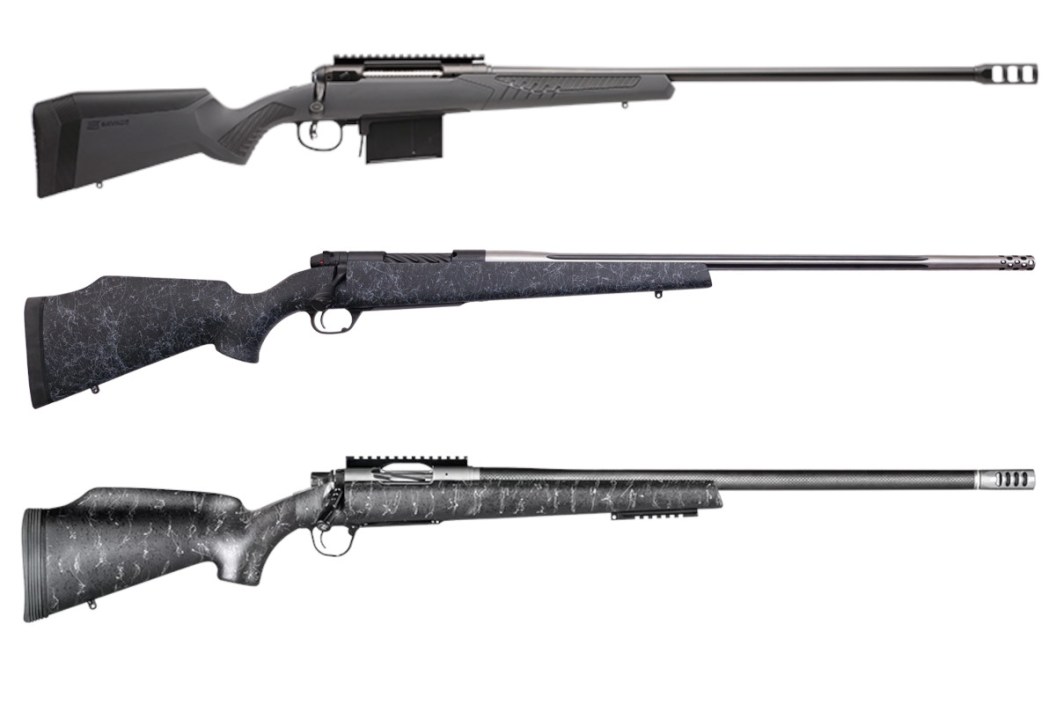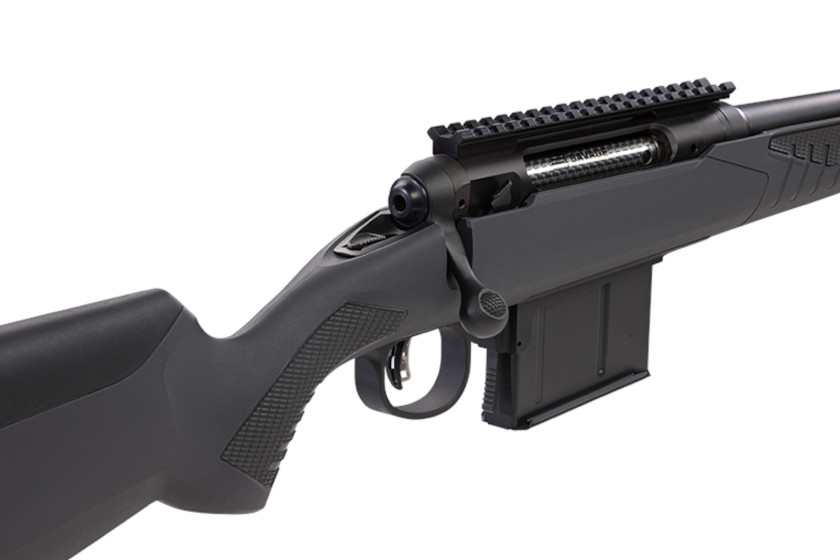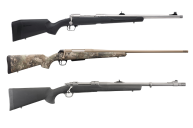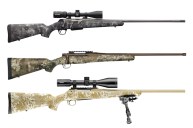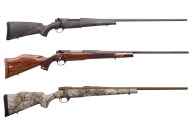There are not many cartridges that can literally take down every big game animal in North America. The .338 Lapua Magnum is one of those rare rounds. While it was originally designed for military snipers and law enforcement, dedicated hunters have proven the .338 Lapua's effectiveness on everything from whitetails and mule deer up to elk and even the large, lumbering bison. It's all thanks to the nearly 4,000 pounds of energy delivered by 250-grain and larger bullets. As a long range hunting tool, it's nearly unmated in terms of trajectory. It's quite capable of extremely flat shooting at distances of 200 to 400 yards, allowing hunters to bag animals that previously would have walked away unharmed. Hearing all that, you might be surprised to hear the .338 Lapua has mostly a niche following these days. There are some very good reasons for that which we'll dive more into later. The .338 Lapua may not be the round for everyone. But for many people it's going to hit that perfect sweet spot. The right combination of speed, power, and long-distance ability that quite frankly leaves a lot of other hunting rifle cartridges in the dust in terms of performance. However, if you're looking for a hard-hitting cartridge that can quite literally do it all in terms of big game here in North America, keep reading to learn more about this fascinating round.
.338 Lapua The Round
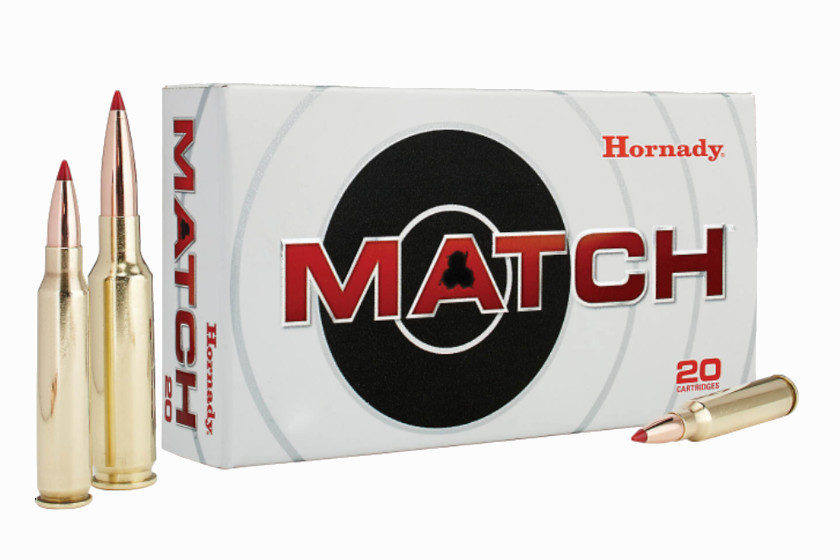
Academy Sports
When compared to many other popular hunting rounds on the market today, the .338 Lapua is still something of a baby, as it was only developed in 1989. It does use a rather old cartridge, the .416 Rigby, as a parent case. The Lapua was born out of sniper rifle research in the early 1980s by companies like Research Armament Industries. Long story short, development started when the .416 Rigby was necked down for an 8.6mm (0.338-inch) bullet. Shortly after that, Finnish ammo manufacturer Lapua teamed up with SAKO and British gunmaker Accuracy International to perfect what we know today as the .338 Lapua Magnum. Most notably, Lapua greatly increased the case strength to handle the enormous pressure inside. The first Lapua rounds were designed with bullets that were full metal jacket. This was originally designed for military sniper rifles, after all.
Today, ammo options are still somewhat limited, especially for hunters. However, the ballistics speak for themselves. Hornady manufactures a factory round in their ELD-X Precision Hunter line that has a 2,800-fps muzzle velocity. That's with a 270-grain bullet! It's pumping out about 4,699-foot pounds of muzzle energy. Hornady says this round has zero drop at 200 yards from a 24-inch test barrel. At that distance, it's still doing 2,562-fps and can deliver 3,935-foot pounds of energy. Hornady also offers a 285-grain bullet for competition in their Match Grade line which is doing 2,745-fps at the muzzle and is dishing out about 4,768-foot pounds of energy.
Lapua makes several types of factory ammo today with similar ballistics. The 231-grain Naturalis is a good example of a quality hunting round. Lapua says it has zero drop at 100 yards and is travelling about 3,018-fps at the muzzle and is hitting with about 4,681-foot pounds of energy. We could go on and on, but it should be obvious now that this round has some serious speed and stopping power for hunting.
Disadvantages of the .338 Lapua Magnum
If this is your first time reading about the .338 Lapua, you are probably thinking there's got to be a catch with this round, and you'd be right. There are several. For one, there's tremendous recoil, as you might expect when using such large casings and bullets. Because of the power and recoil, many firearms manufacturers need to make the guns heavier to compensate. If you're looking for a precision rifle package, you can expect it to weigh anywhere from 11 to 12 pounds. That's fine for long range shooting at the range, but almost unusable in the field for hunting. You will find a few die-hards who will tote guns like that into the deer woods, but personally, I'd never try it. Manufacturers have managed to do some amazing things with the designs of .338 Lapua rifles in recent years, but you're going to be hard pressed to find one under eight pounds.
The second drawback is the cost, both for the rifles themselves and the ammunition. If you're looking for something under $1,000, the .338 Lapua may not be for you. The lower end rifles seem to start around the $1,200 range and they only go up in price from there. Some higher end .338s sell for $5,000 or more.
And then there's the factory ammo. That Hornady Match Grade we mentioned earlier? We found it online going for about $120 a box, or nearly $6 a round. Even Federal Premium's American Eagle line of jacketed soft points goes for nearly $70 for a box of only twenty rounds. If you're not into handloading when you start shooting .338 Lapua, odds are you'll get into it quickly, if only to keep from burning a hole through your wallet.
There are other disadvantages, such as a lack of ranges reaching out to 1,000 yards and more, which is what this rifle likes, but most people get more hung up on the rifle and ammo costs. We cannot blame them. It's one of the main reasons the .338 Lapua remains something of a niche. If you haven't been scared away yet, let's look at some of the hunting rifle options on the market today in this awesome round.
Savage Arms 110 Long Range Hunter
If you are planning on seriously going into the backcountry of North America hunting with the .338, the 110 is a great gun to consider. At 8.8 pounds, Savage Arms has done an excellent job of cutting the weight down to where it's manageable for hiking up and down hills and mountains in pursuit of game. It probably still won't be comfortable, but the trade-off is that you'll be able to reach out further than other hunters. It has a 26-inch carbon steel barrel with a 1:9 twist rate and a muzzle brake to help tame the recoil a bit. This rifle also does ergonomics well due to the signature Savage AccuFit system to adjust things like length of pull and comb height. These small creature comforts go a long way towards comfort on a rifle that has a 49.5-inch overall length. This centerfire bolt action can usually be found for about $1,300 new from most major retailers.
Christensen Arms Traverse
High end rifle manufacturer Christensen Arms has been doing some exciting things, specifically trying to build better stocks for bolt action rifles in recent years. As a result, they've really reduced the weight factor on this selection. The Traverse may be the lightest .338 Lapua on the market at 7.7 pounds. Much of that is thanks to the carbon fiber Monte Carlo stock. We like this one for anyone planning a remote hunt 10 to 20 miles from the nearest road where you need firepower without being weighed down too much. It's also well suited for the elements thanks to a 27-inch, 416R stainless steel barrel wrapped in Aerograde carbon fiber. It also features a removable muzzle brake to help with the recoil. Another thing we like about the Traverse is that M16-style extractor with a slightly larger ejection port. It helps this rifle cycle smoother than some of the other offerings on the market. It's not cheap; you're looking at about $2,500 for a Traverse, but you can head into the field confident you've got one of the best long range rifles out there right now.
Weatherby Mark V Accumark
For the hunter looking for a .338 Lapua Magnum rifle that's as accurate as it is functional in the field, it's hard to go wrong with a Weatherby Mark V. They gave this rifle a 28-inch barrel with a 1:9.3 rate of twist. They also fluted the barrel, which helps cut the weight of this rifle down to 8.3 pounds. The barrel, receiver, bolt, knob, and safety have also been given a black Cerakote finish. That's going to make it perfect for the rain and snow common at high altitudes. We like this one for anyone seeking accuracy for two reasons. One, Weatherby rifles guarantee a sub-MOA group at 100 yards using factory ammo. And two, it's got an extremely short 54-degree bolt throw that makes for a faster and cleaner follow-up shot when inches count. Not that you're likely to need another shot with a round like this, but it's a little extra peace of mind when pursuing more dangerous game animals. It can be found for about $1,800 from most major retailers.
Christensen Arms Mesa Long Range
If you are fine with a little extra weight, the Mesa is a great option for a slightly lower $1,600 price tag than the Traverse we mentioned earlier. We like this one for anyone hunting more flat lands where you're going to have more chances at distances out to 400 yards or more. The barrel length of the Mesa is 27 inches and you're looking at a 1:9.3 rate of twist. This free-floating barrel should handle the rain and snow well because it's made from 416R stainless steel. The muzzle is also threaded, and it comes standard with a muzzle brake. Christensen Arms backs this rifle with a sub-MOA accuracy guarantee, too. The stock has spacers to adjust both the length of pull and the comb, so there's some nice customizing of the ergonomics. This rifle comes in at 10 pounds. That's heavy, but not to the point where it's completely unwieldy in the field. But, you'll still want to eat your Wheaties in the morning before hiking any mountains with it.
Savage Arms 110 Precision
We know precision rifles are not often used for hunting, but this is one where you can make it work. We'd recommend it more for long distance hunting from an elevated position than an intense spot and stalk through the brush and up the hills. The 11-pound weight is just light enough to make it doable if you're determined enough. Savage fluted the barrel of the 110 Precision and skeletonized as much of the stock as possible to make this one of the lighter .338 Lapua Mag precision rifles on the market. This rifle has a 24-inch carbon steel barrel with a 1:9.3 rate of twist and is threaded with a BA muzzle brake installed to help with the recoil. Another reason we like this one is simply because they include their crisp and adjustable AccuTrigger system that allows each shooter to adjust between a 1.5 and 4-pound trigger pull based on his or her preferences. At $1,500, it's also rather affordable for a precision rifle.
For more outdoor content from Travis Smola, be sure to follow him on Twitter and Instagram For original videos, check out his Geocaching and Outdoors with Travis YouTube channels.
READ MORE: 338 WINCHESTER MAGNUM: THE POWERFUL BIG GAME ROUND AND 5 RIFLES CHAMBERED FOR IT
